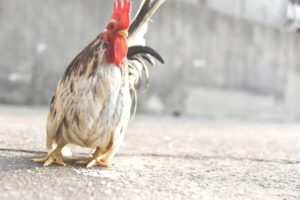
Biometrics is often defined or described as the measurement of the body related to human characteristics; however, homo sapiens aren’t the only species in the animal kingdom to which biometric measurements have been applied. From farming, to conservation of endangered specifies, to finding a lost family pet – biometrics have been applied to a whole range of creatures.
To pluck an example from our past coverage, chickens in China — a country where biometric technology is widely used on its human population – are about to get in the spotlight via farming insurance company. An arm of ZhongAn Online plans to use facial recognition and a blockchain ledger in system dubbed ‘Go-Go Chicken’ to provide information to consumers about the 4-6 month life cycle of free range chickens. A user can download an app on a smartphone to see the bird’s journey from farm to supermarket with charts showing its level of activity.
Biometrics in farming isn’t just for the birds, or for organic farming for that matter. Agricultural giant Cargill is taking AI-machine vision and other biometric technologies and applying them to livestock, beginning with dairy farms. More than just scanning the face of a cow, Cainthus’ technology looks to monitor food consumption and behavioral biometrics to optimize industrial farming, looking to expand beyond heifers and move into swine, poultry, and fish farming.
The observation of the movement and habits of animals is also being used in the efforts of conservation and studying of wildlife. Michigan State University’s biometrics lab recently announced PrimNet, a facial recognition system first designed to accurately track lemurs, but soon expanded to identify all kinds of apes, and has been associated with the mobile app PrimID. The technology is valuable for researchers and scientists working to more easily understand the movements and population of apes, and also has applications in the prevention of poaching which has lead to a significant decrease of primates in the wild.
Our domesticated critters can also benefit from facial recognition biometric technology, specifically lost cats and dogs. New Zealand Companion Animal Register (NZCAR) has been reuniting stray pets through the uploading of lost pet photos to the NZCAR database, with facial recognition used to match the submission against photos of found animals uploaded by other users.
The various applications of biometrics on animals outside of humans points to to vast versatility of the technology, leaving the undeniable questions of what and how technologies like facial recognition can be applied to various industries, research, and networking spheres.
—
July 4, 2018 – by Susan Stover








Follow Us